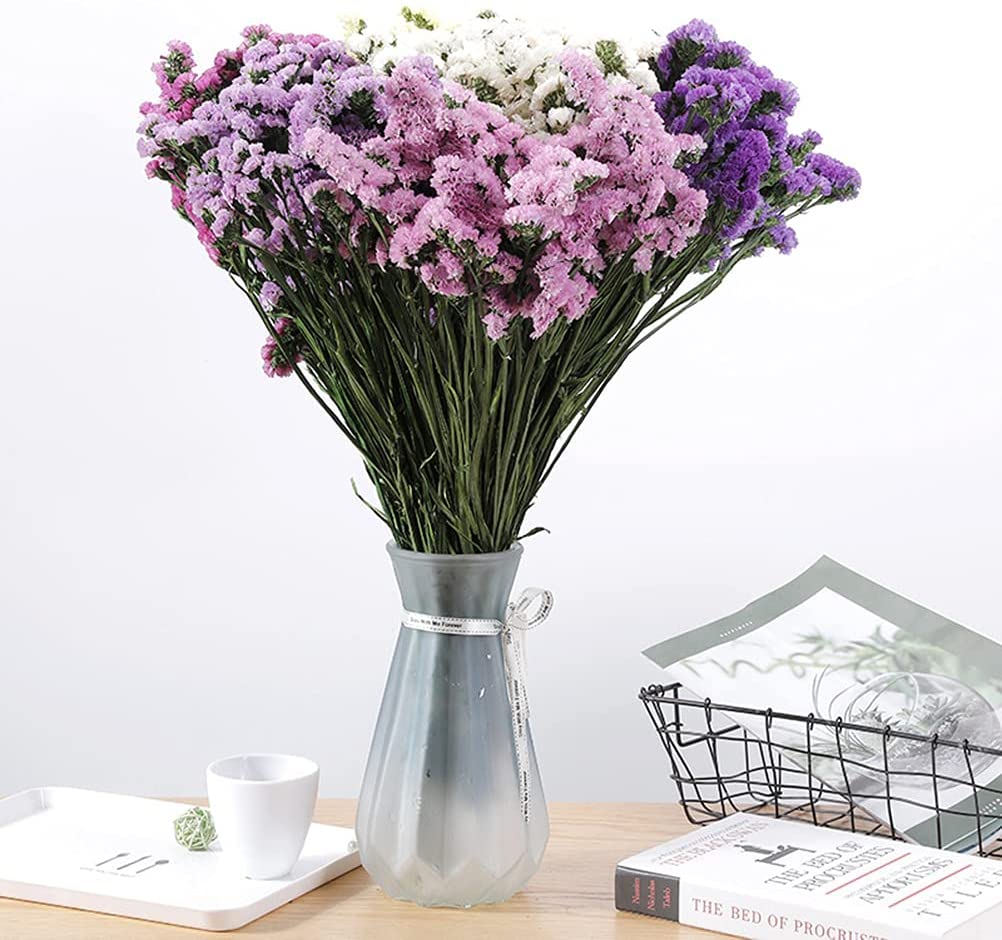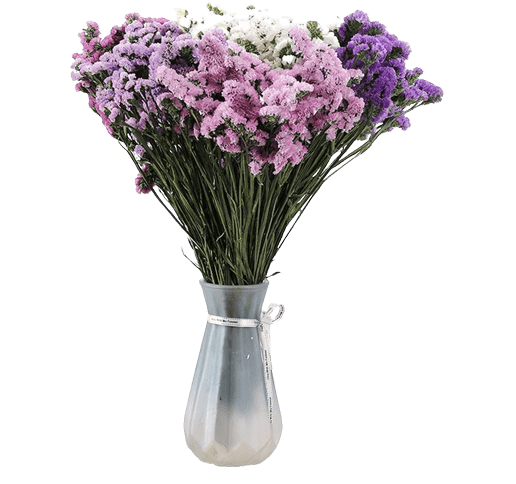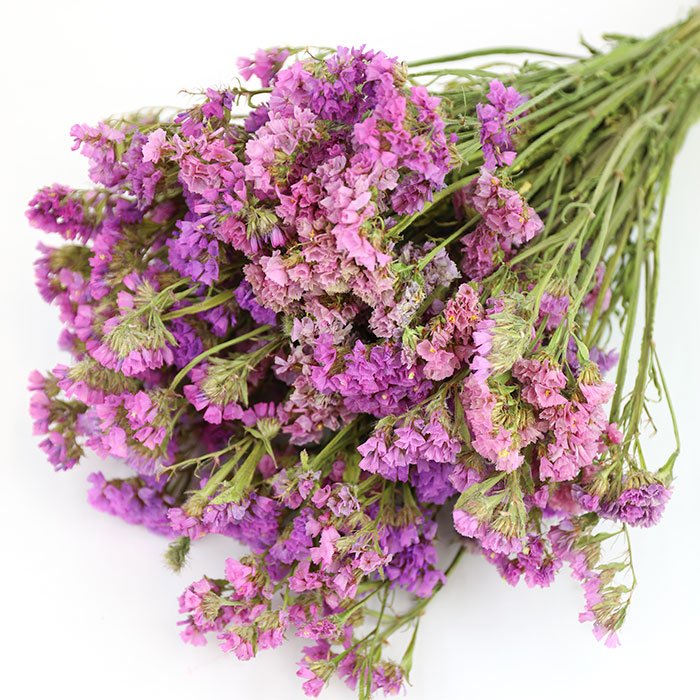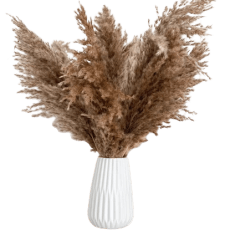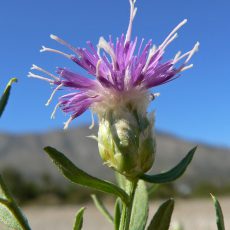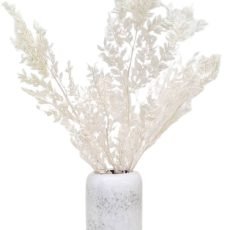Description
Dried sea lavender flower
Dried sea lavender flower : Also known as marsh rosemary and lavender thrift, sea lavender is a perennial coastal plant that can often be found growing in both salt marshes and along coastal sand dunes. Despite its name, it is not actually related to the lavender plant. The plant creates leathery, spoon-shaped leaves, red-tinted stems, and delicate purple blooms that appear in summer. These plants are easily recognizable as a result of their dense, cloud-like sprays of tiny, paper-like lavender flowers.
Sea lavender is primarily grown for its beautiful floral display; though its large green paddle-shaped basal rosette leaves will also create an attractive ground-cover in the early spring, until the plant flowers in the summer. Part of what makes sea lavender a somewhat unusual perennial is that the leaves are so close to the ground, and long flower stems will develop from this grouping of foliage.
That’s part of what makes these plants an ideal choice to plant among other similar perennials—the foliage remains mostly hidden, and the flowers stand out. They are also lovely as a stand-alone plant, particularly for anyone who is looking for a soft, yet eye-catching, texture around the bordering edge of a garden. for more information please read Iran Sea lavender flower specification .
Sea lavender flower specifications
- Scientific name : Limonium
- Family : Plumbaginaceae
- Order : Caryophyllales
- Genus : Limonium
- Native Area : Coastal areas
Types of sea lavendef species
There are between 120-150 species in the genus, many of them local endemic species with a very restricted range. Species not given a common name here are generally referred to simply as “sea-lavender”, “statice,” or “marsh-rosemary”.
- Limonium aragonense (Monegros, endemic)
- Limonium arboreum (tree limonium or Statice arborca; Tenerife, endemic)
- Limonium aureum (central Asia: Siberia, Mongolia, northwest China)
- Limonium auriculaeursifolium (Alderney sea-lavender; southwest Europe, northwest Africa)
- Limonium australe (Australia)
- Limonium bellidifolium (matted sea-lavender; Europe, southwest Asia)
- Limonium bicolor (Mongolia, northwest China)
- Limonium binervosum (rock sea-lavender; western Europe)
- Limonium bourgaei (Lanzarote, endemic)
- Limonium brassicifolium (Canary Islands, Statice brassicifolia)
- Limonium braunii (Cape Verde)
- Limonium brunneri (Cape Verde)
- Limonium caesium (western Mediterranean)
- Limonium californicum (California sea-lavender; western North America, Oregon to Baja California)
- Limonium callianthum (western China: Xinjiang)
- Limonium cancelatum (eastern Mediterranean Croatia)
- Limonium carolinianum (Carolina sea-lavender; eastern North America, Newfoundland to Bermuda,
- Florida and Tamaulipas; syn. L. angustatum, L. nashii)
- Limonium caspium (central Europe east to central Asia)
- Limonium chrysocomum (central Asia)
- Limonium confusum (western Mediterranean)
- Limonium congestum (central Asia)
- Limonium coralloides (central Asia)
- Limonium cordatum (central Mediterranean)
- Limonium cosyrense (eastern Mediterranean)
- Limonium delicatulum (western Mediterranean)
- Limonium dichroanthum (central Asia)
- Limonium dielsianum (western China: Gansu, Qinghai)
- Limonium dregeanum (Natal statice; South Africa)
- Limonium echioides (Mediterranean)
- Limonium emarginatum (southern Iberia, northern Morocco)
- Limonium ferulaceum (western Mediterranean)
- Limonium flexuosum (central Asia)
- Limonium franchetii (east coastal China)
- Limonium fruticans (Tenerife, endemic)
- Limonium gmelinii (eastern Europe, northern Asia, Siberia)
- Limonium gougetianum (western Mediterranean)
- Limonium humile (lax-flowered sea-lavender; northwest Europe)
- Limonium imbricatum (Tenerife, endemic)
- Limonium insigne (southeast Spain, endemic)
- Limonium jovibarba (Cape Verde)
- Limonium kaschgaricum (central Asia)
- Limonium iranicum (Iran)[3]
- Limonium lacostei (western China, Tibet, Kashmir)
- Limonium leptolobum (central Asia)
- Limonium leptostachyum (statice; central Asia)
- Limonium lilacinum (central Turkey, endemic)
- Limonium limbatum (Transpecos sea-lavender; interior southwest United States)
- Limonium lobinii (Cape Verde)
- Limonium macrophyllum (Tenerife)
- Limonium scabrum
- Limonium macrophyllum
- Limonium macropterum (Canary Islands)
- Limonium macrorhabdos (Ladakh)
- Limonium melitensis (Malta)
- Limonium minutum (southeast France, endemic)
- Limonium mouretii (Morocco)
- Limonium multiflorum (western Portugal, endemic)
- Limonium myrianthum (central Asia)
- Limonium narbonense (Southern Europe, North Africa, Southwest Asia)
- Limonium nashii (Maritime North America)
- Limonium ornatum (Morocco)
- Limonium otolepis (Saltmarsh sea-lavender; southwest and central Asia)
- Limonium paradoxum (Great Britain, Ireland,[4] endemic)
- Limonium paulayanum (Yemen, endemic)
- Limonium pectinatum (Canary Islands)
- Limonium peregrinum (South Africa)
- Limonium perezii (Perez’s sea-lavender; Canary Islands)
- Limonium platyphyllum (German statice; central and southeast Europe)
- Limonium potaninii (western China: Sichuan, Qinghai, Gansu)
- Limonium preauxii (Canary Islands)
- Limonium puberulum (Canary Islands)
- Limonium ramosissimum (Mediterranean)
- Limonium reniforme (kidneyleaf sea-lavender; Iran)
- Limonium rezniczenkoanum (central Asia)
- Limonium scabrum Kuntze (South Africa)
- Limonium sieberi (eastern Mediterranean)
- Limonium sinense (eastern Asia coasts: China, Ryukyu Islands, Vietnam)
- Limonium sinuatum (wavyleaf sea-lavender; Mediterranean)
- Limonium sokotranum (Yemen, endemic)
- Limonium solanderi (Australia)
- Limonium spathulatum (Mediterranean)
- Limonium spectabile (Canary islands)
- Limonium strictissimum (Mediterranean: France, Italy)
- Limonium suffruticosum (western and central Asia)
- Limonium tenellum (Mongolia, northwest China)
- Limonium tetragonum (autumn statice or square-stem statice; eastern Asia south to New Caledonia)
- Limonium thouinii (Mediterranean)
- Limonium tomentellum (Black Sea region)
- Limonium virgatum (western Mediterranean)
- Limonium vulgare (common sea-lavender; western Europe, northwest Africa)
- Limonium wrightii (Japan, Taiwan)
- Limonium zeraphae (Malta)
Color :
Natural color
Specification :
size :
Minimum quantity of order (MOQ) :
Title of all kinds of dried sea lavender flowers decors :
